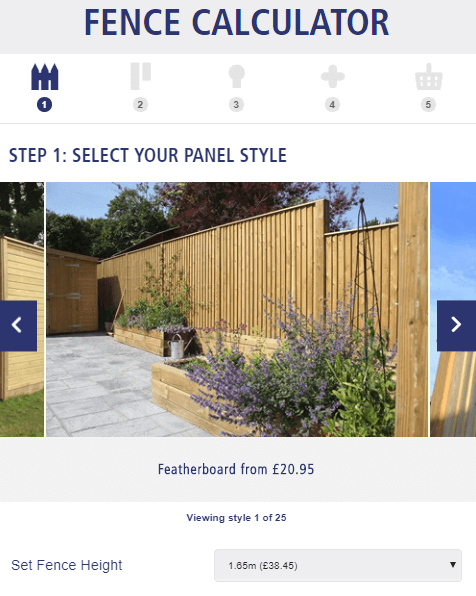07/11/2018 12:00 AM
1. Begin by measuring the the fence run
For a fence run between two points, in a straight line across level ground: mark the start and end points of the run by driving short stakes/pegs into the ground or marking the ground and measure between the two points.
For a fence run across two points, with changes in direction across level ground: mark the start and end of the run by driving short stakes/pegs into the ground or marking the ground. Next, mark any changes in direction and measure between each marked point. Treat the distance between each point as an individual run.
For a fence run between two points, in a straight line across sloping ground: mark the start and end points of the run by driving long stakes/pegs into the ground. Next, run a plumb line by fixing a length of string horizontally between the two markers, ensure the string is taut then ‘true it’ using a spirit level. Finally, measure the horizontal distance between the two markers using the string as the guide.
2. Make your post selection
Our fence panels are designed for use with Slotted Jakposts® (Standard 100 x 100mm or Heavy-Duty 120 x 124mm) but may also be used with square section (non-slotted) posts (Standard 70 x 70mm or Heavy 91 x 91mm).
Decide on the type of post you’d like to use then select the length of post required for the fence height* including the gravel board** and any topping/trellis you want to incorporate above the fence and between the posts.
A post is required to support the ends of each fence panel. In addition to the two basic styles of post we offer (Slotted Jakposts and square, non-slotted posts), Slotted Jakposts are also available in the following types:
- Intermediate Post (use to join panels along the fence run)
- Corner Post (use at the end of the run or to create a right angle)
- To create an end post, use an intermediate post with end post strip
3. Calculate the number of panels required
for your fence run
Use the overall measurement you have taken for each fence run and deduct the sectional dimensions of the selected posts required. Divide this dimension by the standard width of our fence panels (1.8m / 1800mm) to give you the number of full panels required, for example:
18m / 1.87m = 9.62 Jacksons fence panels
Where there is a requirement for a special size to fit between posts, these may be ordered as a ‘special’ or you can order our Panel Width Cut-Down Kits to suit the fence style selected.
Further help
Should you need additional help to or to confirm your calculations use our fence calculator.

Alternatively, contact one our experts on 0800 408 2234.
If you are intending to have the fencing installed, we would suggest you consider employing the services of our Approved Installers, or if you want to install the fence yourself, take a look at the Installation Instructions available to download.
Additional resources
Concrete Or Wooden Fence Posts?
What To Consider When Choosing A Fence